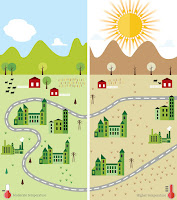As humans emit greenhouse gases into the environment, it causes the Earth to warm, we already know that. What is less certain is how it will cause changes to the weather we experience in our lives. In the past few years, research looking into the connection between a warming planet and more extreme weather has found more conclusive connections.
I have covered extreme weather quite a bit recently, because the science is so compelling and new. But a new paper published in the Proceedings of the National Academy of Sciences by doctoral student Omid Mazdiyasni and his advisor Amir AghaKouchak takes a fresh look at this topic.
Instead of just looking at heat waves or just looking at precipitation, they looked for concurrent events. Droughts can be caused by reduced precipitation. Hot weather speeds evaporation and damages the environment. But droughts and high temperatures can happen at the same time. These concurrent-event droughts are particularly harmful, they can set in fast and severely.
The authors present results of various heat wave severity (85%, 90%, and 95% events) and for various durations (3 day, 5 day, and 7 day events). Focusing on 1960-2010, they found that the concurrence of all combinations of drought, heat wave intensity, and heat wave durations “have increased substantially in the south, southeast, and parts of the western USA.”
In other past of the country, these trends have decreased (I have written about changing precipitation in the USA here and I have published on this topic here), in part because a warmer atmosphere contains more water vapor.
What is also interesting is that the authors find a greater increase in the most extreme events. The new study clears up past research which has been mixed in this area. The authors more advanced statistical technique is better suited to finding trends and patterns in the climate record.
Read more at Global Warming's One-Two Punch: Extreme Heat and Drought

No comments:
Post a Comment